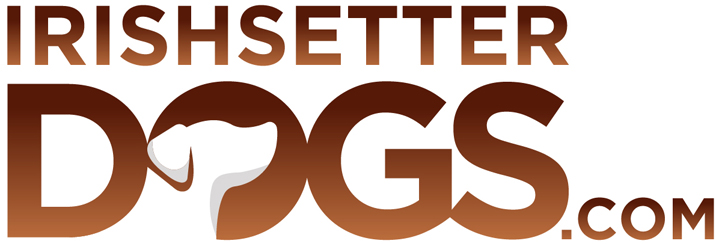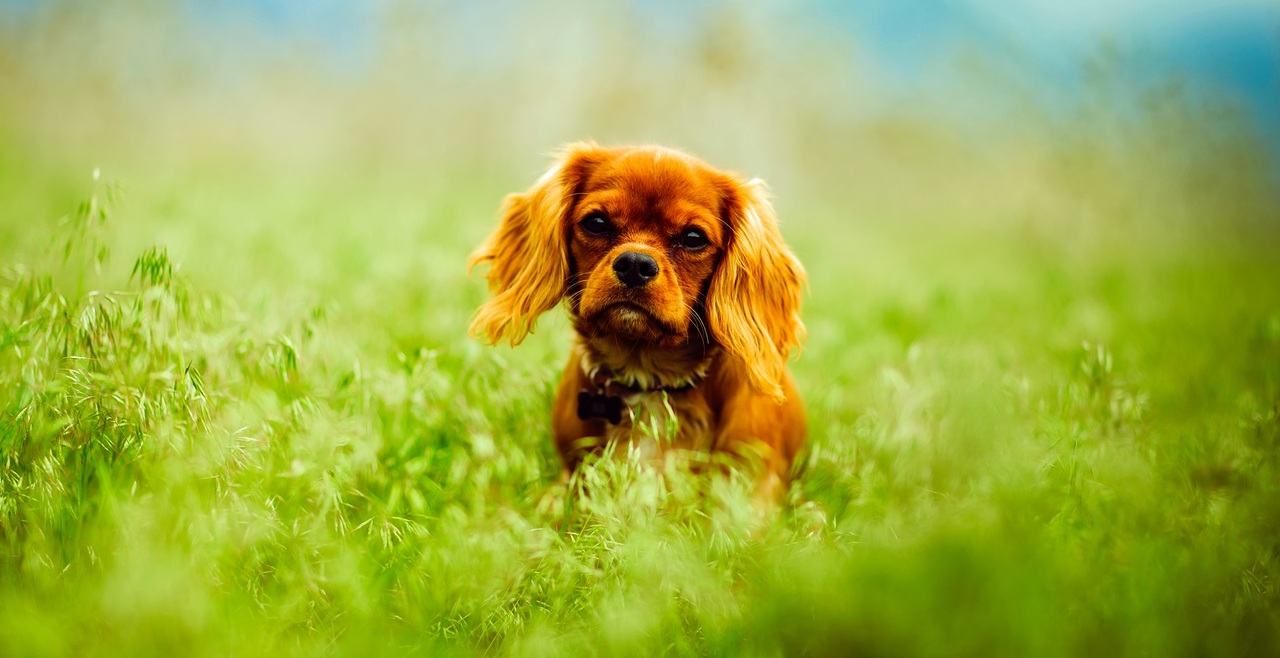One of the most distinctive features of the Irish setter is its long, red feathers or coat. This soft and silky coat is one of the breed’s most beloved traits, but when do Irish setters get their feathers?
Perhaps, you notice that your pup’s fur is starting to get a little longer and fuller. Or maybe, you’re concerned about whether it’s natural for Irish setters to develop feathers. Worry no more; we will answer your question in this article and more breed information.
Irish Setter Overview
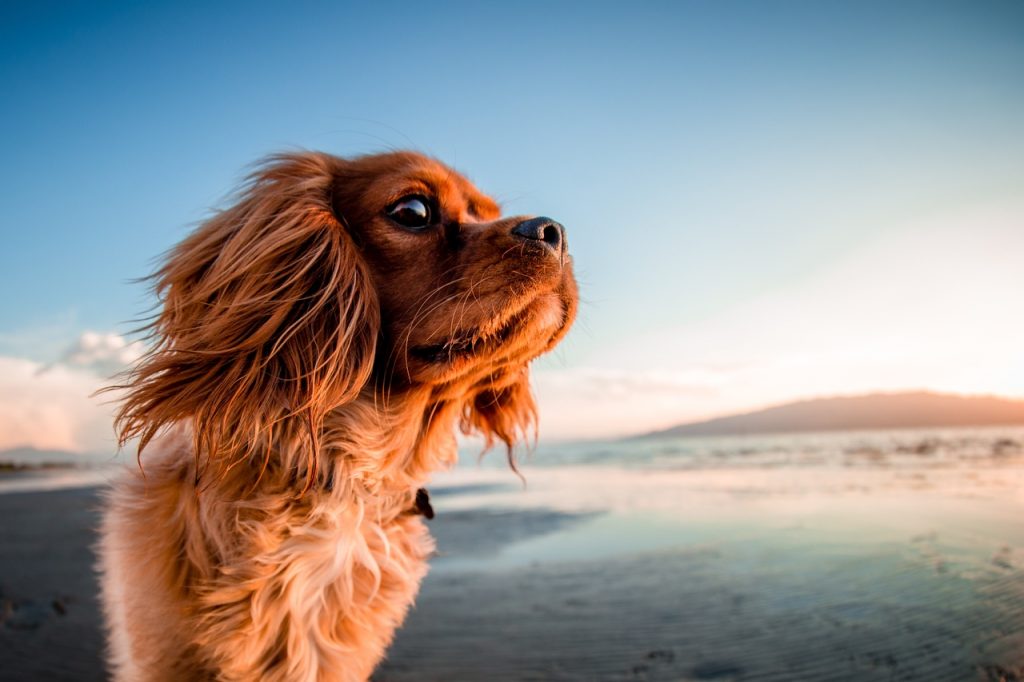
The Irish setter is a beautiful, red-coated dog often seen as the quintessential hunting companion. They are the descendant of the red setter, first bred in Ireland in the 18th century. At that time, there were two types of setters in Ireland: the red-and-white variety and the red variety. It’s thought that the red-and-white setters were eventually crossbred with other breeds, such as the Gordon setter and the English pointer, to create the red setter we know and love today.
The red setter was originally used as a hunting dog, but over time, it became clear that this breed also had the potential to be a loyal and loving family companion. In 1873, the Irish setter was officially recognized as its own separate breed by the Kennel Club in England.
Irish setters are among the loveliest dogs to be around. Aside from their kind and gentle personality that makes they are excellent family pets. The dogs coat, and silky red feathers are also one of its most notable features.
When Do Irish Setters Get Their Feathers?
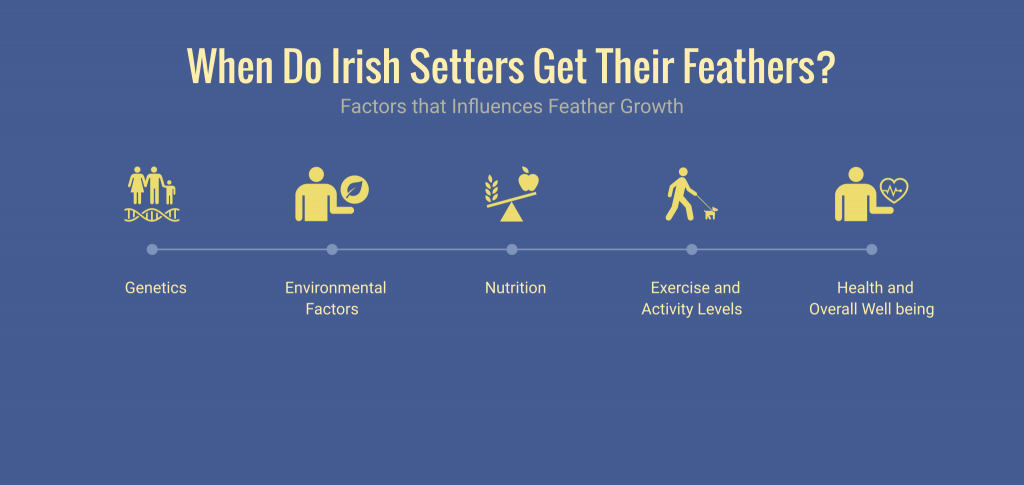
Many people think that all dogs are born with their feathers, but that’s not the case! In fact, some dog breeds don’t get their feathers until their several months old. So when do Irish setters get their feathers?
Generally speaking, most Irish setter dog will start to grow their feathers between the ages of 4 and 6 months. However, some individual setters may start earlier or later than this. Several factors can influence when a pup starts to grow its feathers, including:
🐾Genetics
If the pup’s parents and grandparents developed their feathers relatively early on, it’s likely that the same will be true for the pup. However, if the pup’s family takes longer to develop their feathers, the same will likely be true for the pup as well.
🐾Environmental Factors
The environment in which a pup is raised can also play a role when they develop its feathers. If the pup is kept outdoors and exposed to cold temperatures, it may take longer to grow its soft and silky feather coat. Additionally, the time of year can also play a role in feather growth. In general, pups born in the spring will grow their feathers sooner than those born in the fall.
🐾Nutrition
Proper nutrition plays an extremely important role in a pup’s growth. An unbalanced diet or a lack of sufficient protein can cause delays in feather growth.
🐾Exercise and Activity Levels
Irish Setters that are more active tend to start growing their feathers earlier than those that are more sedentary. This is thought to be due to the increased blood circulation that comes with exercise, which helps to promote the growth of new tissue.
🐾Health and Overall Well being
A pup’s overall health and well-being can affect the rate at which it develops its feathers. If a pup is ill or has any underlying health issues, this could cause delays in feather growth. Some health conditions that could affect feather growth include:
- Malnutrition: Malnutrition can cause delays in feather growth due to a lack of necessary vitamins, minerals, and proteins.
- Hypothyroidism: It is a condition where the body does not produce enough of certain hormones, which can lead to delayed feather growth.
- Parasites: Parasites, such as fleas and ticks, can cause skin irritation and hair loss, thus can slow down the growth of feathers.
- Skin Problems: It is common problem for puppies to suffer from skin problems, such as allergies and eczema. This can lead to slower feather growth due to irritation on the skin.
Why Does Feathers Important for Irish Setters?
Did you know that those feathers serve an important purpose? Below are some of the reasons why feathers are so crucial for Irish Setters:
👉Insulation
Feathers provide a layer of insulation against cold temperatures, helping keep a pup warm during the winter. They can also help protect them from harsh weather conditions such as wind and rain.
👉Protection
Aside from weather protection, UV radiation can also damage a pup’s skin. The feathers offer an extra layer of protection against UV rays, helping to shield the pup from harm.
👉Appearance
Of course, those lovely feathers are also beneficial from an aesthetic standpoint. They add overall beauty to the Irish Setter appearance and can also be used to identify certain traits and characteristics of the breed.
👉Socialization
Those gentle feather coats also provide a sense of comfort and security for puppies who might feel intimidated in new social situations. This additional layer of protection helps to make it easier for them to socialize and interact with other dogs.
Thus, it is essential for Irish Setters to develop their feathers to maximize their well-being and overall health.
Tips to Help Irish Setters Grow Feather Faster
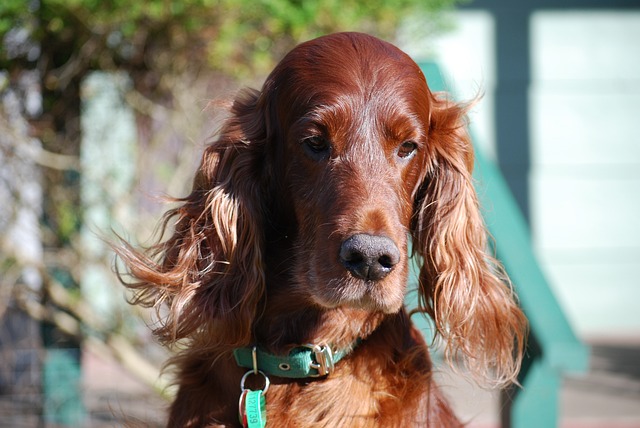
There are a few things you can do to give your dog’s coat a boost. Here are four tips to help your Irish setter grow feathers faster:
✔️Feed Them a High-Quality Diet
Like people, what Irish Setter eats has a big impact on their overall health-including the condition of their coat. To ensure your setter gets all the nutrients they need to grow strong, healthy feathers, be sure to feed them a high-quality diet rich in proteins and omega-3 fatty acids. You can talk to your veterinarian about which food would be best for your dog and its particular needs.
✔️Use Supplements
In addition to feeding your dog a nutritious diet, consider giving them supplements to help with feather growth. Supplements that contain biotin and fish oil are particularly beneficial for promoting healthy skin and feathers. You can talk to your veterinarian about which supplements would be right for your dog.
✔️Brush Them Regularly
Brushing not only helps remove dead hair and debris from your dog’s coat, but it also stimulates new growth. Be sure to brush your setter’s coat at least once a week-more often if possible-using a soft-bristled brush designed specifically for dogs. Start at the head and work your way down the body, careful not to pull or tug too hard on the hair.
✔️Give Them Regular Baths
Baths not only keep your dog’s coat clean and free of dirt and debris, but they also help promote new growth. When bathing your setter, be sure to use a gentle shampoo designed specifically for dogs-human shampoo can be too harsh and cause irritation. And always follow up with a conditioner to help keep their coat soft and healthy-looking.
Aim to bathe your dog every two weeks or so-more often if they tend to get dirty frequently (like if they play outside a lot).
Common to Rare Coat or Feather Problems for Irish Setters
Suppose you have done your part to help your Irish setter grow feathers quicker, but they are still lagging behind. In some cases, the slow feather growth can be attributed to a medical condition or other health issues that must be addressed. Here are some of the most common-and rare-coat and feather problems that may affect Irish Setters:
- Dry Skin: This is often due to a lack of essential fatty acids in the diet and dry climate conditions or excessive bathing. It causes the feathers or coat to become dry and brittle.
- Allergic Dermatitis: This is an allergic reaction to a particular substance or food, which causes the skin to become itchy and inflamed.
- Hot Spots: These areas of irritated skin can be caused by anything from fleas to allergies. They tend to be found near the base of the tail or around the ears.
- Alopecia: This is a condition where patches of hair are missing or thinning out, which can be caused by genetics, allergies, parasites, or nutritional deficiencies.
- Color Dilution Alopecia: This is a rare genetic disorder that results in thinning of the coat, as well as white patches.
- Seborrhea: This is a condition where the skin produces too much oil, which can lead to greasy feathers and dandruff.
These are just a few more common skin and coat problems that can affect Irish Setters. If you notice any changes in your pup’s feathers or skin, it is best to consult a veterinarian immediately to get a proper diagnosis and treatment plan.
How to Take Care of an Irish Setter’s Feathers
Taking care of an Irish setter’s feathers is essential to keeping them healthy and looking their best. While regular brushing is important to keep your dog’s coat healthy and free of tangles, you must also pay special attention to the feathers on your setter’s legs and tail. Some tips for proper feather care include:
- Inspect your setter’s feathers regularly. Check for any sign of redness, inflammation, or irritation. If you see any of these, take your dog to the vet as soon as possible.
- Brush your setter’s feathers with a soft-bristled brush at least once a week. This will help prevent mats and tangles from forming.
- When bathing your setter, use a mild shampoo designed specifically for dogs. Avoid getting water on the feathers, as this can cause them to become wet and matted.
- After bathing, thoroughly dry your setter’s feathers with a towel. Then use a blow dryer set on low heat to finish the job. Be careful not to get too close to the blow dryer, as this could damage the feathers.
- If your setter’s feathers become wet or matted, don’t try to brush them out yourself-this could hurt your dog. Instead, take them to a professional groomer who can safely and properly remove the mats.
- When trimming your setter’s nails, be careful not to cut too close to the feather shafts. Cutting the shafts could damage the feathers and cause them to fall out.
- If you notice bare patches on your setter’s feathers, don’t worry this is normal molting behavior and nothing to be concerned about. The new feathers will eventually grow back in.
- Avoid using harsh chemicals or sprays near your setter’s feathers, as these can cause irritation or even lead to feather loss.
- If you must use chemicals or sprays near your setter’s feathers, always test them on a small area first to make sure there is no reaction.’
- Be sure to consult your veterinarian if you have any questions or concerns about taking care of your Irish setter’s feathers.’
Frequently Asked Questions
Do Irish Setters Have Hair or Fur?
Irish Setters have both hair and fur. The hair is the outer coat you see when looking at the dog. The fur is the undercoat that provides insulation against the cold.
How Often Should You Bathe Your Irish Setter?
You should bathe your Irish Setter every 4-6 weeks. Be sure to use a specifically designed shampoo for dogs, as human shampoo can strip the natural oils from their skin and coat.
How Much Exercise Does Your Irish Setter Need?
Your Irish Setter needs at least 30 minutes of exercise per day, ideally 1-2 hours. They are a high-energy breed and need plenty of opportunities to run and play. A daily walk is a good start, but they will also enjoy playing fetch, running, or going to the dog park.
What Do You Do To Maintain Pee Feathers?
Pee feathers are the long feathers on the back of your dog’s legs that can get stained by urine. To keep them clean, you can wipe them with a damp cloth after your dog goes to the bathroom. You can also trim them if they get too long or stained.
Do Irish Setters Shed a Lot?
Yes, Irish Setters do shed a lot! They shed year-round but especially heavily during spring and fall when blowing out their coats. Be prepared to vacuum often and brush your Irish Setter several times weekly to help control the shedding.
How Much Grooming Does an Irish Setter Need?
Owners of Irish Setters must be prepared to commit to regular grooming sessions, as the breed does require significant amounts of care. In general, an Irish Setter should be brushed at least once a week and more often if possible. The coat should also be trimmed regularly to prevent tangles and mats from forming. In addition, the hair around the dog’s eyes and ears should be kept trimmed to prevent irritation.
Final Words
The Irish Setter is a beautiful breed of dog that makes a great companion. If you’re considering getting an Irish Setter, be sure to research to know what to expect in terms of care and maintenance.
And in terms of when do, Irish Setters get their feathers? As mentioned, it happens at around 4 months of age, so be ready to take extra special care of your setter’s feathers when they arrive. With the right grooming habits, regular baths, and brushing, you can ensure that your Irish Setter will have beautiful, healthy feathers for years to come.
